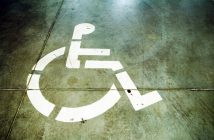Opioid use is the leading cause of overdose-related fatalities in the United States. The National Institute on Drug Abuse reports that there is an opioid overdose death every 20 minutes. Opioid use disorder involves a destructive cycle of dependence and addiction. Medication assisted treatment (MAT) can help break the cycle, reduce the incidence of opioid overdose death, and help prevent relapse in individuals affected by an opioid addiction.
What Is Medication Assisted Treatment?
MAT combines evidence-based psychosocial interventions such as cognitive behavioral therapy (CBT) or mental health counseling with FDA-approved medications for the treatment of opioid use disorder (OUD) in order to support a long-term recovery. The medication works to address the biological and physiological aspects of the addiction, while psychosocial interventions address the other triggers – such as family dynamics, trauma, or co-occurring mental health disorders – that may pose a risk of relapse.
MAT and Post-Acute Withdrawal Syndrome
In order to understand the effectiveness of MAT, it is first essential to know how opioid use affects the brain and the body. Often, opioid addiction begins with a legitimate prescription following surgery or another condition causing pain. When patients take an opioid, they experience pain relief because the medication blocks the perception of pain. It also produces a rush of endorphins, which produces a sense of euphoria. It is this sense of euphoria that may cause someone to misuse opioids. Over time, the brain chemistry alters, and it relies on the drug to produce a dopamine rush, which triggers the euphoric effects. When people addicted to opioids go without the drug for an extended period, they begin to experience withdrawal symptoms.
Opioid withdrawal symptoms are painful and include:
- Nausea, vomiting, or diarrhea
- Fatigue
- Chills
- Muscle aches
- Anxiety
- Insomnia
- Mood swings or irritability
- Irregular heart rate
- Heart palpitations
- Headache
The intense discomfort that a person experiences from withdrawal will often lead them to use more opioids to counteract the effects. Even once a person detoxes from an opioid, the psychological effects can last for weeks to months. Medication assisted treatment helps control withdrawal symptoms and ultimately prevents relapse by reducing cravings and discomfort.
Post-Acute Withdrawal Syndrome (PAWS)
The initial detoxification process from opioids can last 7-10 days. At this point, the opioids are leaving the body and the brain is learning how to cope without the synthetic introduction of chemicals. After the initial detoxification stage, patients may suffer from post-acute withdrawal syndrome (PAWS). PAWS refers to the emotional and psychological stage of addiction. Many people describe it as an emotional roller coaster marked by irritability, difficulty sleeping, and intense cravings. PAWS symptoms can last for up to 2 years after the detoxification period. Medication assisted treatment helps control the symptoms of PAWS, which can prevent relapse.
What Medications Treat Opioid Use Disorder?
The FDA currently approves three medications for the treatment of opioid use disorder: naltrexone, methadone, and buprenorphine.
Methadone
Methadone is an opioid agonist, so it produces similar effects to opioids. However, it produces milder effects and is longer lasting than opioids, so it does not impact the affected individual’s ability to function normally. Methadone can alleviate some of the most painful symptoms associated with withdrawal; a single dose can quell cravings for up to a day and a half. Since it also has the potential to become a medication of abuse, a licensed provider must dispense methadone in a supervised clinical setting.
Naltrexone
Naltrexone is available as an intramuscular injection or pill. It is a convenient option because it only requires monthly doses when taken intramuscularly. The oral formulation is a once daily pill that a person can take in the comfort of their own home. Naltrexone is safe for home use because it does not have the potential for abuse or diversion.
Naltrexone is an opioid antagonist, which means it blocks opioid receptors. It controls cravings because the person taking it cannot experience the euphoria or “high” that they once did while taking opioids. Naltrexone is only a suitable option after an initial detoxification period of 7-10 days. If taken while the body is still detoxing from opioids, it can make withdrawal symptoms worse.
Buprenorphine
Buprenorphine is a main component of the medication Suboxone. It is a partial opioid agonist and is combined with naloxone, another medication used to reverse the effects of opioid overdose. As such, it is a difficult drug to misuse. Buprenorphine works to alleviate painful withdrawal symptoms and is suitable for immediate use, even during detox. A person can also obtain it from a doctor’s office if that doctor is certified to dispense it.
Is Medication Assisted Treatment Effective?
Studies show that MAT is more effective in preventing relapse and supporting a long-term recovery compared to psychosocial interventions alone. Data from the National Institute on Drug Abuse demonstrates its efficacy as part of a holistic treatment plan:
- MAT decreases overall opioid use, which in turn decreases opioid overdose death, infectious disease transmission (e.g., Hepatitis C), and even criminal activity. When Baltimore, one of the cities hit hardest by the opioid epidemic, introduced buprenorphine, heroin overdose deaths decreased by 37%.
- Medication assisted treatment increases treatment retention. NIDA states that patients treated with medication are more likely to remain in therapy and are more willing to develop compensatory strategies to cope with their addiction, possibly due to increased comfort.
- Opioid-dependent pregnant women who received MAT had babies with better health outcomes. Babies had reduced symptoms of neonatal abstinence syndrome and had shorter hospital stays.
Myths About Medication Assisted Treatment
Despite a robust body of evidence demonstrating the efficacy of medication assisted treatment, myths regarding the treatment abound. Common misconceptions may prevent people from accessing care that could facilitate their recovery:
- MAT does not substitute one addiction for another. The point of MAT is to help people manage their withdrawal symptoms by introducing medications that partially mimic the effects of opioids without the associated high or sense of euphoria. The medications used do not have potential for abuse, except for methadone. Since methadone does carry some potential for abuse, patients must receive it in a supervised clinical setting.
- MAT is not just the act of taking pills for an addiction. It is part of a comprehensive, holistic treatment plan that also includes evidence-based interventions such as cognitive behavioral therapy or group counseling. Medication works to minimize some of the symptoms of withdrawal so the affected individual can develop strategies to recognize their dependence and cope with its lasting effects in the real world.
- Medications used in MAT do not pose a high risk of diversion. Methadone is highly controlled, and Suboxone is difficult to abuse because one of the main components, naloxone, prevents overdose. Naltrexone represents less than 1% of all drug diversions in the U.S., according to NIDA.
MAT and Opioid Addiction
Medication assisted treatment, when part of a holistic treatment plan, can help control cravings and minimize the risk of relapse for individuals in recovery. Three main medications exist for the treatment of opioid use disorder, and the right medication for each individual may vary based on the degree of their OUD and healthy history. In general, MAT helps support a long-term recovery.
Continuum Recovery Center offers comprehensive, evidence-based drug and alcohol addiction treatment services to individuals suffering from a substance use disorder. Its medication assisted, inpatient, outpatient, and sober living programs help facilitate long term sobriety.




